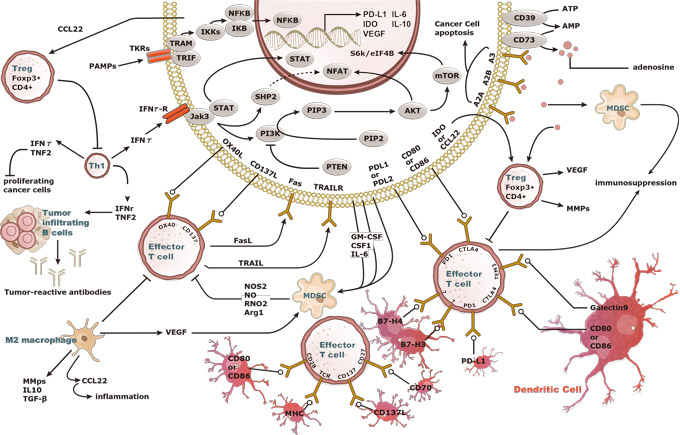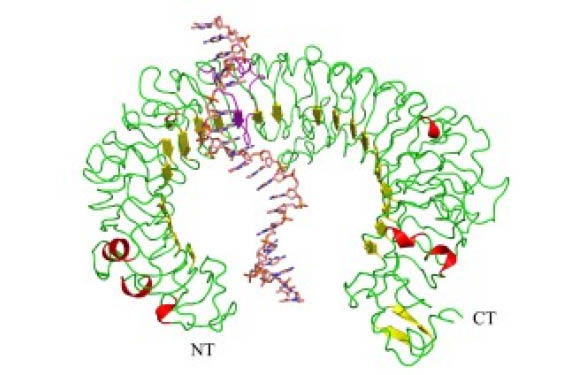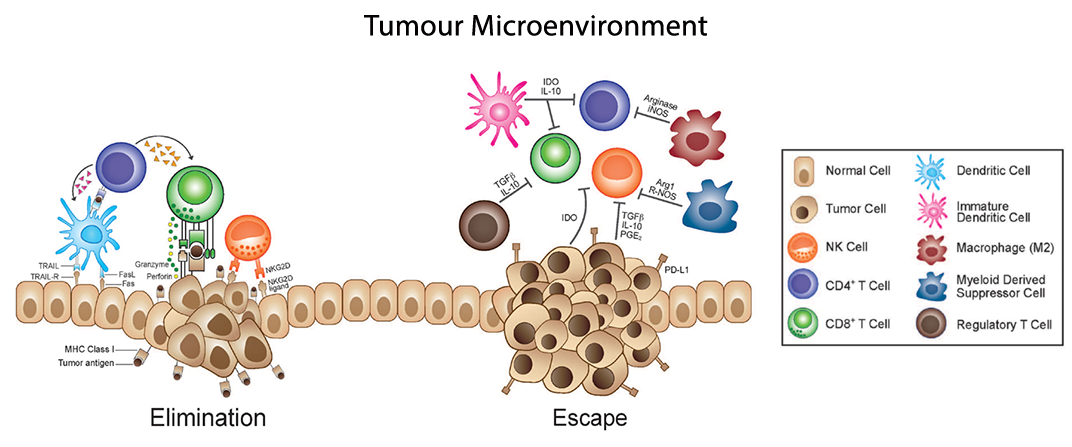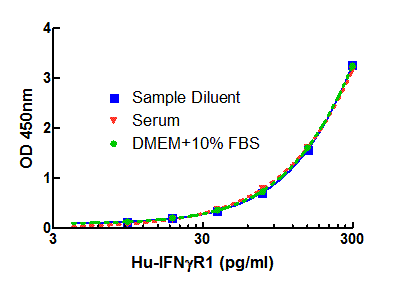Tumour immune evasion can be mediated by a complex set of interaction involving p53, miR-34 and PDL1. This is the conclusion of a work by Cortez et al. and recently published in JCNI .
The involvement of the PD1/PDL1 pathway in cancer-tumour cross-talk and tumour escape is not something new. This pathway is deeply screened in Drug discovery programs and particularly in Immunotherapy (ie. treatments of diseases that induce, enhance, or surpress an immune response) together with other therapeutical promising pathways (IDO, CD137:CD137L, CD40:CD40L, OX40:OX40L, GITR:GITRL, BLTA:HVEM, CD47:SIRPa, B7-1 / CD28 and B7-1 / CTLA4).
In a recent publication, researchers from the University of Texas investigated the mechanisms governing this pathway. They showed that p53 controls PDL1 expression via a microRNA linked to other p53-associated tumour suppressor pathways: miR-34. For this, they used in vivo tumour models that analyze the impact of miRNA34 delivery (+/- X-ray therapy) on immune evasion and tumour growth. The authors have been able to identify a novel mechanism in tumour escape dictating PDL1 expression linked to other p53-related pathways opening new areas for future Cancer immunotherapy approaches.

Related research reagents for Cancer Immunotherapy and Drug discovery programs that have already been cited in International publications:
- PD-L1 antibody 1 : a rabbit polyclonal antibody to PD-L1 1
- STAT1 (phospho Ser727) antibody 2: a rabbit monoclonal antibody ( clone EPR3146 ) to Stat-1 (phospho Ser727)
- STAT1 antibody [N2C2], Internal 2: a rabbit polyclonal antibody to STAT1
- STAT3 [C2C3], C-term 2 : a rabbit polyclonal antibody to STAT3
- STAT3 [C3], C-term 3 : a rabbit polyclonal antibody to STAT3
- TGF beta 1 antibody 4: a rabbit polyclonal antibody to TGF beta 1
- TGF beta 1 antibody 5: a mouse monoclonal ( clone TB21 ) to TGF beta
- TNF alpha [F6C5] 6: a mouse monoclonal ( clone F6C5 ) to TNF alpha
1-Lin YM et al. High PD-L1 Expression Correlates with Metastasis and Poor Prognosis in Oral Squamous Cell Carcinoma. PLoS One 10 (11):e0142656 (2015).
2-Yang DJ et al. Inhibitory effect of litchi (Litchi chinensis Sonn.) flower on lipopolysaccharide-induced expression of proinflammatory mediators in RAW264.7 cells through NF-κB, ERK, and JAK2/STAT3 inactivation. J Agric Food Chem 62 (15):3458-65 (2014).
3-Chen YT et al. PTPRD silencing by DNA hypermethylation decreases insulin receptor signaling and leads to type 2 diabetes. Oncotarget 6 (15) (2015).
4-Xiu-Jie Qi et al. Fasudil, an inhibitor of Rho-associated coiled-coil kinase, attenuates hyperoxia-induced pulmonary fibrosis in neonatal rats. Int J Clin Exp Pathol. 8 (10):12140-12150 (2015).
5-Lee E et al. Cohypermethylation of p14 in combination with CADM1 or DCC as a recurrence-related prognostic indicator in stage I esophageal squamous cell carcinoma. Cancer 119 (9):1752-60 (2013).
6-Fischer R et al. Astrocyte-specific activation of TNFR2 promotes oligodendrocyte maturation by secretion of leukemia inhibitory factor. Glia 62 (2):272-83 (2014).








